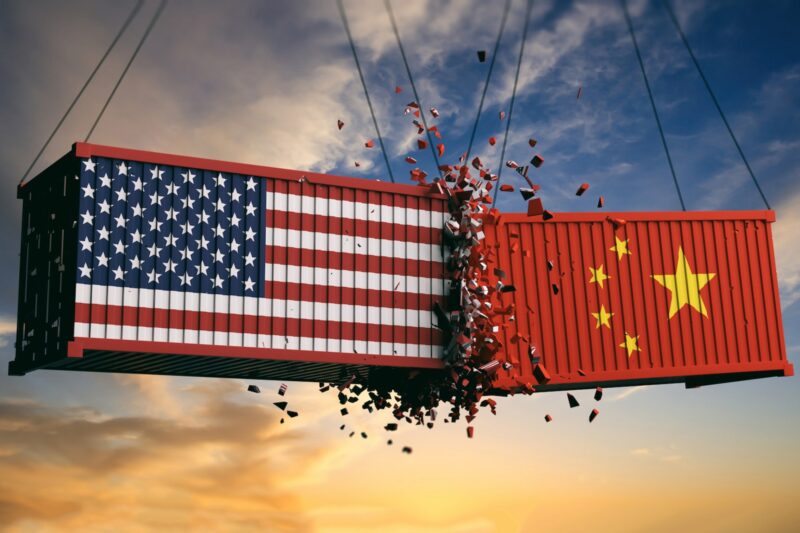Donald Trump’s return to the presidency has reignited trade conflicts with key U.S. partners. Let’s examine the pressure points of these disputes and how they might affect Ukraine.
On January 29, Trump announced that he would impose a 25% tariff on imports from Canada and Mexico and a 10% tariff on goods from China, effective February 1.
“Starting tomorrow, these tariffs will be in place. This is a promise made and a promise kept by the president,” White House press secretary Karoline Leavitt stated. Later that day, Trump reaffirmed in the Oval Office that none of the three countries could take action to prevent the tariffs from taking effect.
This decision did not come as a surprise, given Trump’s repeated threats to use tariffs as leverage for increased cooperation in curbing illegal immigration and stopping the smuggling of fentanyl-related chemicals. He has also touted tariffs as a means to boost domestic production and increase federal revenue.
A Contrasting Approach to Beijing, Mexico, and Canada
Together, Mexico, Canada, and China account for nearly two-thirds of the U.S. trade deficit.
Canada was the first to respond publicly, with Prime Minister Justin Trudeau announcing a “strong, smart, and immediate” response. Trudeau vowed that Canada’s retaliatory measures would remain in place until the U.S. lifted its 25% tariff. Mexico followed suit, announcing its own tariffs on U.S. goods, escalating tensions.
However, on February 3, after a phone call with Canadian and Mexican leaders—Claudia Sheinbaum and Justin Trudeau—Trump decided to pause the additional tariffs. He later described the conversation as “very friendly.”
China, meanwhile, remained outside these negotiations and responded with 15% tariffs on American coal and liquefied natural gas, as well as 10% tariffs on oil, farm equipment, and automobiles. Additionally, Beijing launched an antitrust investigation into Google and imposed export controls on critical minerals.
The U.S.-China Trade Standoff: A Deeper Conflict
This is not the first time the U.S. has taken steps to reduce economic ties with China.
In 2020, Trump revoked certain financial privileges for China but stopped short of full-scale sanctions that could have undermined Hong Kong’s status as a global financial hub. Hong Kong’s unique role—handling 60% of foreign direct investment and 70% of China’s capital inflows—led Washington to treat it separately from mainland China in trade matters. At the time, this was seen as a targeted response to Beijing’s suppression of freedoms in the territory.
Contrary to expectations that Trump might de-escalate tensions following China’s retaliatory measures, the White House has shown no urgency in seeking a resolution. However, China may find a silver lining—as Trump threatens tariffs on EU goods, economic ties between Beijing and Europe could see a thaw.
Ukraine: An Indirect but Costly Victim of Trade Wars
While the immediate impact of U.S. trade conflicts on Ukraine’s economy is limited, the indirect consequences—rising global prices, economic slowdowns, and reduced Western financial support—are concerning.
- Rising Costs: The trade war is expected to drive up prices for cars, electronics, and fuel, reducing consumer purchasing power in the U.S.
- Ukraine’s Economic Vulnerability: Ukraine remains highly dependent on international financial aid due to the war. Any economic disruptions in the West could reduce available resources for supporting Ukraine.
- Declining Political Support: Poland, once Ukraine’s strongest advocate in the EU, is growing weary of the strain caused by millions of Ukrainian refugees. This further diminishes Ukraine’s chances of joining the EU or NATO—which were already slim.
Trade Wars and Ukraine’s Strategic Risks
The ongoing U.S.-EU trade dispute poses additional risks for Ukraine. Since Europe is Ukraine’s primary trading partner, tariffs could stifle business activity, reduce exports, and shrink budget revenues. A decline in Western economies would further weaken Ukraine’s economic stability—potentially depreciating its currency and limiting financial aid from allies.
In short, the Munich Security Conference 2025 and future trade negotiations will be critical moments in determining how these economic shifts impact Ukraine’s future stability.




